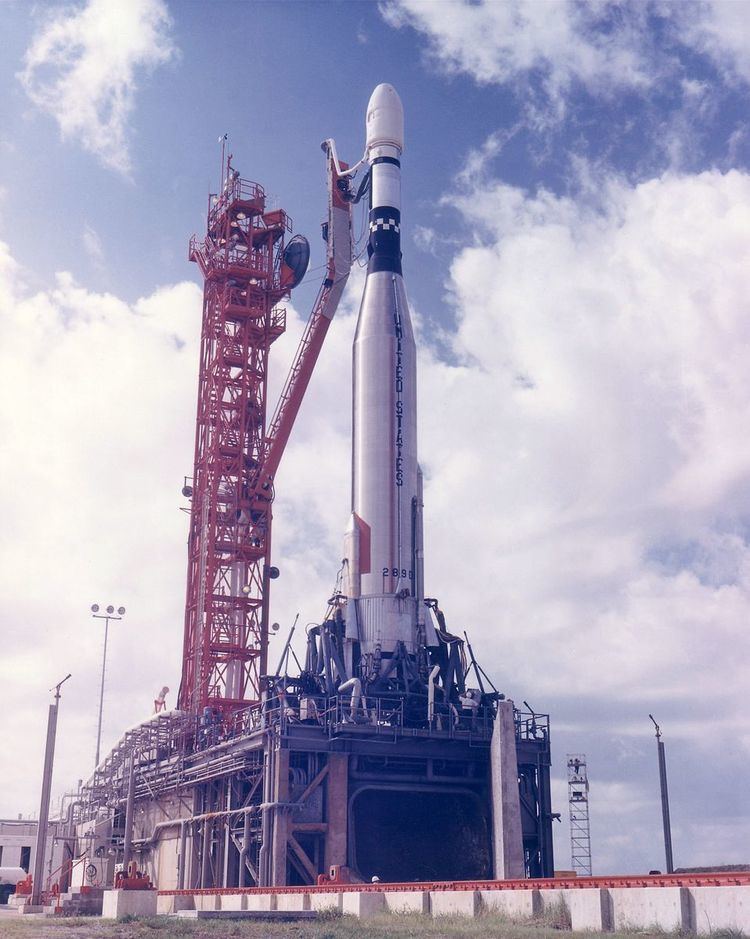Short name LC-13 Launch pad(s) One | Operator US Air Force
NASA Total launches 52 | |
 | ||
Status Inactive. Land leased to SpaceX as Landing Zone 1 First launch Atlas B 4B
2 August 1958 Last launch Atlas Agena D 5505A
7 April 1978 Address 0 County Road 0, Ivesdale, FL 61851, USA Launch site Cape Canaveral Air Force Station Similar Cape Canaveral Air Force, Cape Canaveral Air Force, Cape Canaveral Air Force, Cape Canaveral Air Force, Cape Canaveral Air Force | ||
Launch Complex 13 (LC-13) was a launch complex at Cape Canaveral Air Force Station, the third-most southerly of the original launch complexes known as Missile Row, lying between LC-12 and LC-14. The LC-13 site is currently leased by SpaceX and has been renovated for use as Landing Zone 1, their east coast landing location for returning Falcon 9 and Falcon Heavy launch vehicle booster stages.
Contents
LC-13 was originally used for test launches of the SM-65 Atlas and subsequently for operational Atlas launches from 1958 to 1978. It was the most-used and longest-serving of the original four Atlas pads. It was inactive between 1980 and 2015.
On 16 April 1984, it was added to the US National Register of Historic Places; however it was not maintained and gradually deteriorated. On 6 August 2005 the mobile service tower was demolished as a safety precaution due to structural damage by corrosion. The blockhouse was demolished in 2012.
LC-13 was on land owned by the US government and was originally controlled by the United States Air Force. It was transferred to NASA in 1964 and back to the Air Force in 1970. In January 2015, the land and remaining facilities at LC-13 were leased to SpaceX for a five-year lease.
Launch Complex 13
Together with Launch Complexes 11, 12 and 14, LC-13 featured a more robust design than many contemporary pads due to the greater power of the Atlas compared to other rockets of the time. It was larger and featured a concrete launch pedestal that was 6 metres (20 ft) tall and a reinforced blockhouse. The rockets were delivered to the launch pad by a ramp on the south side of the launch pedestal.
1956-1961 Atlas Missile tests
Starting in 1958, Atlas B, D, E and F missiles were tested from the complex.
One on-pad explosion occurred, the launch of Missile 51D in March 1960, which suffered combustion instability and had to be destroyed within seconds of launch. The Atlas fell back onto LC-13 in a huge fireball, putting the pad out of commission for the entire spring and summer of 1960. The next launch hosted from LC-13 was the first Atlas E test on October 11, exactly seven months after the accident with Missile 51D. Afterwards, LC-13 remained the primary East Coast testing site for Atlas E missiles, with Atlas F tests mainly running from LC-11 (Missile 2F in August 1961 was the only F-series Atlas launched from LC-13).
1962–1978 Atlas Agena
Between February 1962 and October 1963 the pad was converted for use by Atlas-Agena. The modifications were more extensive than the conversions of LC-12 and LC-14 with the mobile service tower being demolished and replaced with a new, larger tower. The first launch from the renovated pad was Vela 1 on October 17, 1963.
Significant launches included:
The final launch from LC-13 was a Rhyolite satellite on 7 April 1978, using an Atlas-Agena.
The pad was deactivated from 1980 to 2015.
Landing Zone 1
The site of the former Launch Complex 13 is now leased to SpaceX, and designated as Landing Zone 1.
SpaceX signed a five-year lease for the land at the former Launch Complex 13 on 10 February 2015, in order to use the area to land reusable launch vehicles. It intends to convert the old Atlas launch pad into a set of five discrete landing pads, one large primary pad with four smaller alternate pads surrounding it.
SpaceX accomplished its first successful landing at the complex on the Falcon 9 Flight 20 mission, which occurred on 22 December 2015 UTC.
